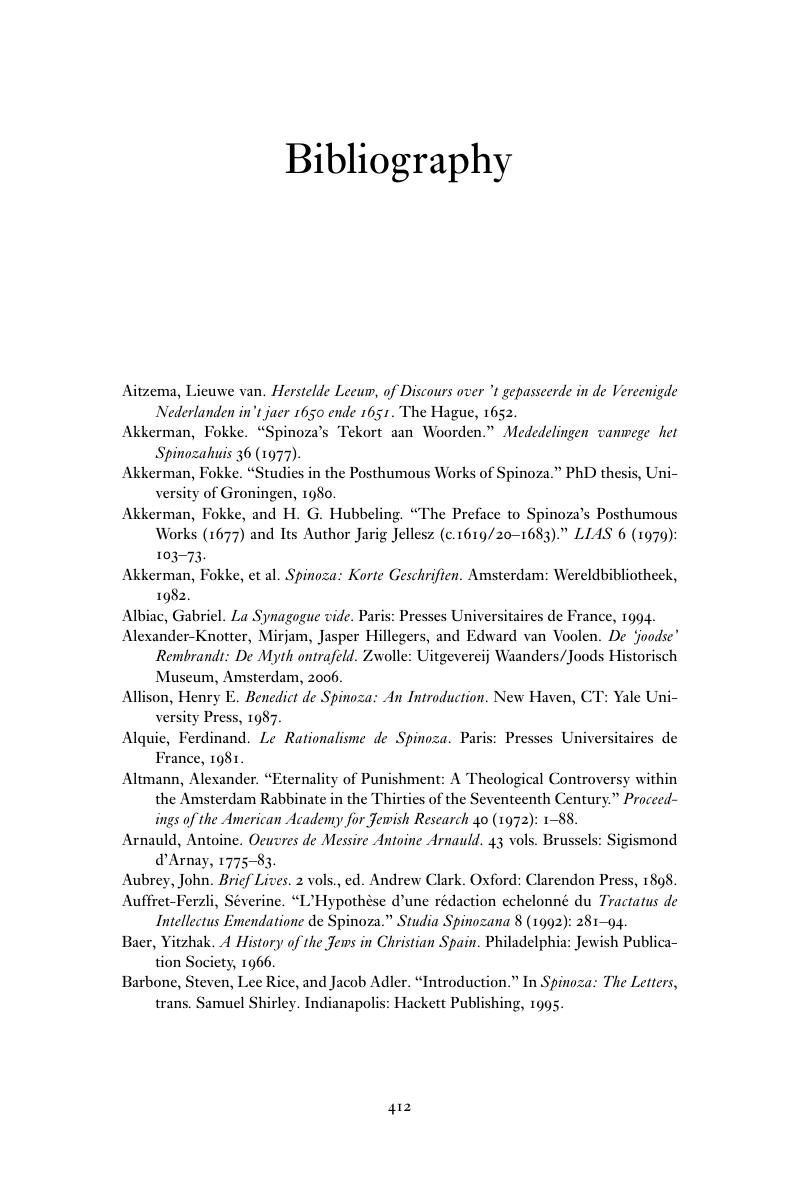Book contents
- Spinoza
- Frontispiece
- Spinoza
- Copyright page
- Dedication
- Contents
- Illustrations
- Preface to the Second Edition
- Preface to the First Edition
- Acknowledgments
- 1 Settlement
- 2 Abraham and Michael
- 3 Bento/Baruch
- 4 Talmud Torah
- 5 A Merchant of Amsterdam
- 6 Ḥerem
- 7 Benedictus
- 8 A Philosopher in Rijnsburg
- 9 “The Jew of Voorburg”
- 10 Homo Politicus
- 11 Calm and Turmoil in The Hague
- 12 “A free man thinks least of all of death”
- A Note on Sources
- Bibliography
- Index
- Plate Section (PDF Only)
- References
Bibliography
Published online by Cambridge University Press: 04 August 2018
- Spinoza
- Frontispiece
- Spinoza
- Copyright page
- Dedication
- Contents
- Illustrations
- Preface to the Second Edition
- Preface to the First Edition
- Acknowledgments
- 1 Settlement
- 2 Abraham and Michael
- 3 Bento/Baruch
- 4 Talmud Torah
- 5 A Merchant of Amsterdam
- 6 Ḥerem
- 7 Benedictus
- 8 A Philosopher in Rijnsburg
- 9 “The Jew of Voorburg”
- 10 Homo Politicus
- 11 Calm and Turmoil in The Hague
- 12 “A free man thinks least of all of death”
- A Note on Sources
- Bibliography
- Index
- Plate Section (PDF Only)
- References
Summary

- Type
- Chapter
- Information
- SpinozaA Life, pp. 412 - 426Publisher: Cambridge University PressPrint publication year: 2018



